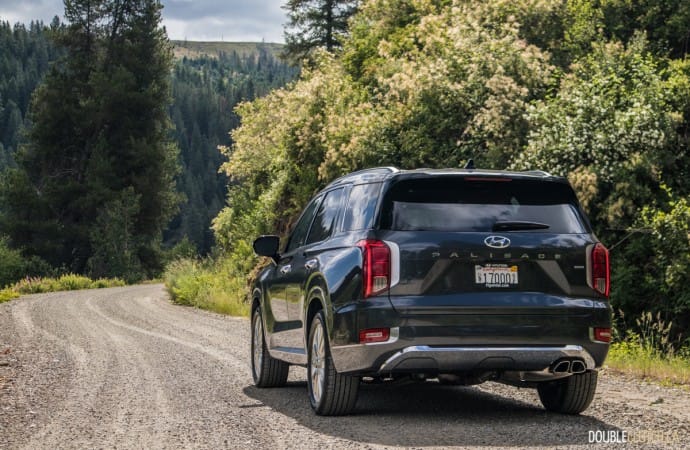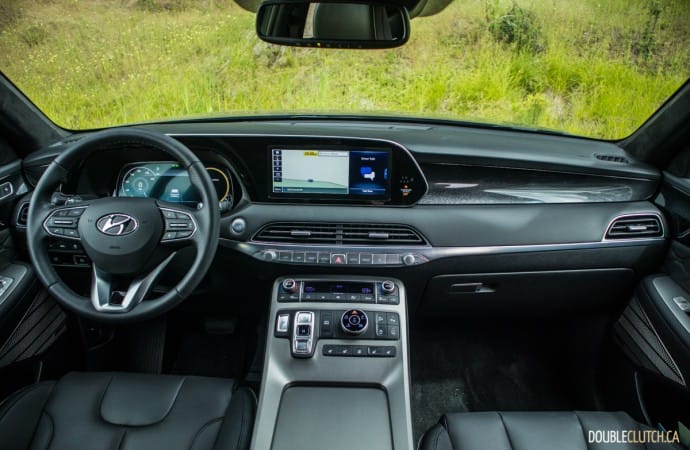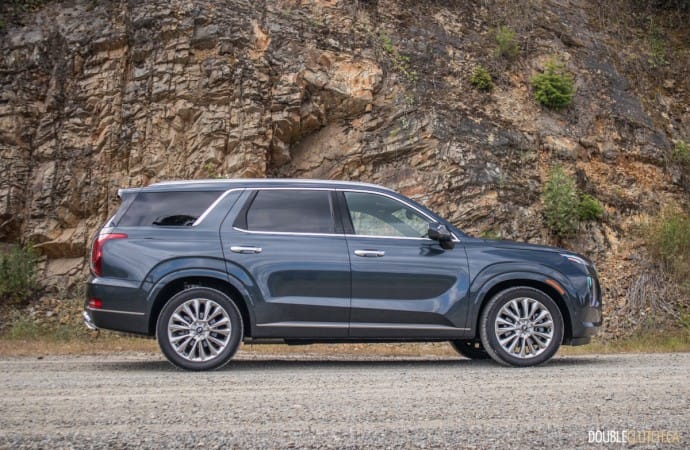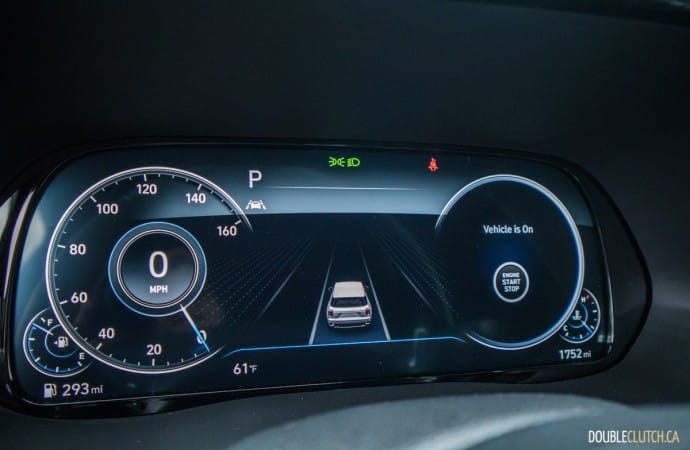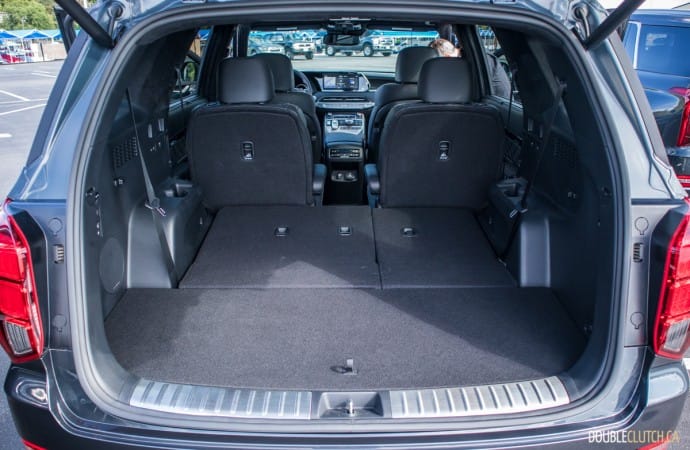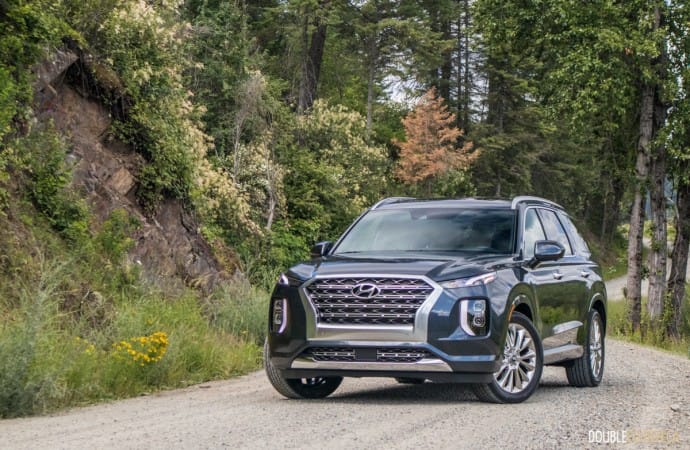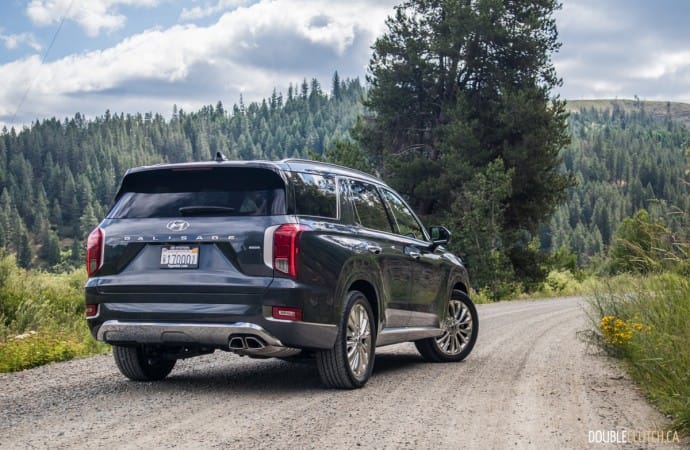COEUR D’ALENE, IDAHO – We have been recommending Hyundai’s latest Santa Fe (reviewed here) many of our readers, but there is a very specific target audience that it has been unable to serve. The three-row model, the Santa Fe XL, has gone largely unchanged for a few years now and lacks the updated platform that the regular model got for the 2019 model year. Hyundai has just taken the wraps off their new flagship, the 2020 Hyundai Palisade. It’s new from the ground up and offers three rows of seating along with a plethora of useful tech and luxurious touches.
We flew to Coeur d’Alene, Idaho, to sample the latest Palisade and spend a couple of days with Hyundai learning all about this new contender. Sitting in a hotly competitive segment with established players such as the Honda Pilot (reviewed here), Toyota Highlander and Mazda CX-9, the Palisade needs to be exceptional to have any shot at all of success. The styling is aggressive, with Hyundai’s signature front fascia and sharp lines. We almost see some derivation from the likes of the GMC Yukon and Cadillac Escalade.
The interior is just as striking as the exterior, with an extremely well designed cabin offering excellent ergonomics and high quality fit and finish. The Palisade features quilted Nappa leather on higher trim models, which contrasts nicely with the upholstery throughout the cabin. Wood and metallic finishes are available depending on your taste, and the center console is easy to use and has large, clearly marked buttons for minimal confusion. The front and second row seats can be heated and ventilated, with second row ventilation unavailable in any other competitor.
The only available powertrain on the Palisade is a naturally aspirated direct-injected 3.8L V6, which offers 291 horsepower at 6,000RPM and 262 lb-ft. of torque at 5,200RPM. It’s a solid step up from the 3.3L V6 that powered the outgoing Santa Fe XL, both in terms of refinement as well as efficiency. The 3.8L can switch between Atkinson and Otto cycle and has features like a variable intake system, electronic thermostat, two-step variable oil pump, and a 2,900PSI GDI fuel pump.
It’s also a huge positive to see Hyundai opting against forced induction in favour of this creamy smooth V6, which suits the Palisade’s serene personality nicely. Engine response is sharp and immediate, and the Palisade tackled the beautiful roads of Idaho in comfort. An eight-speed automatic is the only available transmission, and shifts smoothly and quietly. There are paddle shifters behind the steering wheel, but there’s honestly no need to ever use them. An auto-hold feature uses the electronic parking brake to hold the vehicle in traffic or at lights without having to keep your foot on the brake, and hill-descent control is also on board.
The Palisade’s HTRAC all-wheel-drive system monitors input signals over 100 times per second, and will send power to the wheel(s) with the most grip. Along with the standard drive mode selection, the Palisade’s Multi-terrain Control system can adjust engine and transmission response, along with the all-wheel-drive system through a variety of modes for the best possible traction. These modes include Snow, Mud, and Sand. As with other Hyundai and Genesis products, we’ve observed that the easiest way to get the most out of this system is to leave it in “Smart”, and allow it to decect the situation based on driving patterns and the environment.
Ride quality is exemplary, with the Palisade’s chassis absorbing nearly all terrain imperfections. Certain models come equipped with auto-leveling rear suspension that’s particularly impressive and helps when towing. This system improves rear stability and minimizes the rear squatting, either when hauling or loaded with heavy cargo.
Fuel efficiency for all-wheel-drive Palisades is 12.3L/100km city and 9.6L/100km highway, for a combined 11.1L/100km. The combined number drops to 10.5L/100km for the front-drive model. While these numbers are already quite good, our managing editor recently took a road trip in the Palisade’s sister vehicle, the Kia Telluride, which has the same powertrain and rough weight, and the same highway fuel rating. He managed to demolish the highway efficiency number without even trying, returning numbers in the 8L/100km range.
Hyundai’s SmartSense safety suite is standard on the Palisade. It includes adaptive cruise control with a traffic stop and go feature, high beam assist, forward collision avoidance with pedestrian detection, lane departure warning, lane keep assist, and more. A new Safe Exit Assist feature locks the rear doors when the system detects a vehicle approaching from behind the car, to prevent opening the door into traffic.
Taking advantage of the Palisade’s versatility is easy as can be. Behind the third row, it can swallow up 509L of cargo, and this number expands to 1,297L with the third row seats folded flat. If you need even more space than this, the second row can fold down to hold up to 2,447L of capacity. Those needing to tow with the Palisade can count on a 5,000-pound capacity, regardless of trim level.
Interior space is very generous, as the Palisade is the largest vehicle Hyundai has ever sold. Most trim levels come with an eight-seat configuration (second row captain’s chairs standard on Ultimate and optional on Luxury), and the second row can fold and slide forward at the touch of a button to maximize ease of access for the third row. The third row is quite tight for adults, but kids will survive just fine. On Luxury and Ultimate trims, the third row can power fold up and down. An available “Driver Talk” mode can play the driver’s voice through the rear speakers, almost like an intercom.
All Palisades offer a host of standard features across the trim line, starting with 16 cupholders throughout the cabin. This includes but is not limited to heated front seats and steering wheel, Hyundai SmartSense active safety suite, eight-inch touchscreen display with Apple CarPlay and Android Auto, and 18” wheels. The base Essential model in front-drive trim at $38,499 is exceptional value within the class, though we would recommend stepping up to the Essential AWD model to preserve resale value, especially for Canadian buyers.
The Palisade Preferred, at $45,499, adds Blind Spot Collision-Avoidance, rear cross traffic alert, three-zone climate control, 20” machined alloy wheels, smart key, and more. In order to get the brilliant 10.25” widescreen navigation system and Harman/Kardon audio, buyers will need to select the $50,199 Luxury which also adds a 360-degree camera and leather seats. Lastly, the range-topping Ultimate adds the Nappa leather, 12.3” digital TFT instrument cluster, and a heads-up display at $53,999.
Between the Palisade and its parent company twin, the new Kia Telluride, the three-row crossover segment has just gotten a dose of much-needed change. While they both build onto the same simple formula that makes this segment so popular with North Americans, they add a touch of class and practicality over the competition. The Mazda CX-9 (reviewed here) is a sharp driver but sacrifices quite a bit, and the Toyota Highlander, while technically quite good, is about as flavourful as a three-course airline meal.
After spending some time with the 2020 Hyundai Palisade, it’s clear that this is one of the more interesting, vibrant choices in a segment dominated by margarine. While most of the crossovers in competition are solid picks, the Palisade cranks things up a notch with a welcome dose of zest. It’s a new face worthy of consideration, and with the latest technology and connectivity on board, this Hyundai should age gracefully as well.

